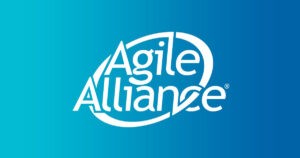Although we have been using Agile mindset and processes tactically, when it comes to strategy and goal setting the waterfall command&control mindset is still the norm.
Most organizations are still using an annual, waterfall, top-down process to create a static set of goals that conflicts directly with Agile.
This talk will show how to define agile goals using OKR (Objectives and Key Results), the goal setting framework adopted by Google, Twitter, LinkedIn and Dropbox.
Attendees will learn how OKR can complement Agile and Lean by:
1) Creating a results-focused culture.
Agile was created as an alternative for managing software development projects. As such, it is focused on managing deliverables (user stories) instead of business results. OKR can help change this mindset from output to outcomes.
2) Enabling autonomous, self-organizing teams
OKRs enables team autonomy by changing the role of the team from “delivering the features the stakeholders wants” to “achieving the OKRs agreed with the stakeholders”.
3) Adopting value-based ceremonies
There is not a single ceremony in Agile for tracking results. By adopting OKR, Agile teams can change this scenario and start to regularly check progress.
OKR also helps prioritize the backlog. If a feature does not help achieving the OKRs, it is not a priority.
4) Enabling Agile Transformation by replacing predictability with results
One of the main barriers to Agile is the loss of perceived predictability. OKR helps overcome that by replacing the Gantt chart with a commitment to deliver pre-defined business results. Instead of committing to deliver X by Y date, the team commits to iterate towards the agreed OKRs.
5) Incentivizing leaner approaches and smaller batches
By adopting a value-based timebox, teams commit to to deliver value (improve the OKRs) until the end of the OKR iteration. This makes them adopt leaner approaches in order to measure it’s impact on the OKRs and adjust accordingly.





